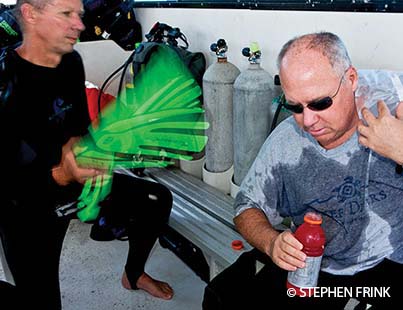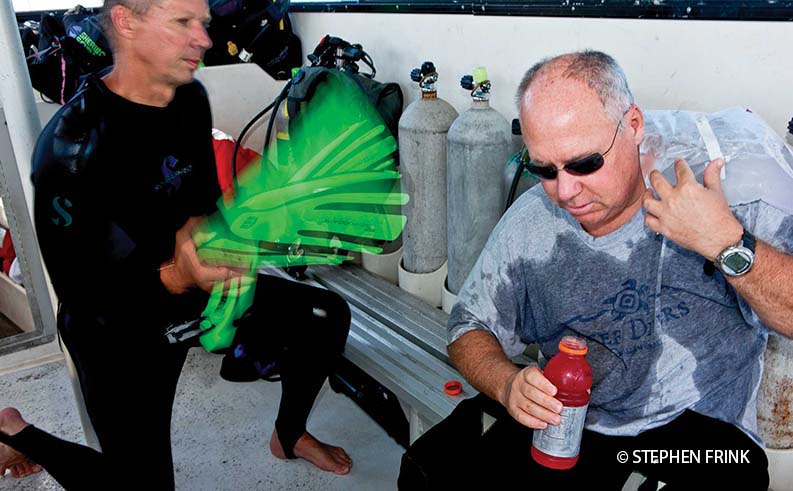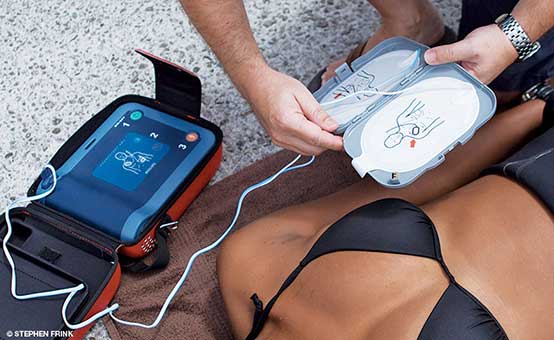

Consider this scenario: You're enjoying a sunny day deep sea fishing on a boat. You strike up a conversation with a buddy and for several hours the two of you stand in the sun, fishing and talking. By the time the boat is heading back to shore, your friend says his stomach doesn't feel well. You notice that he is sweating, his face is pale, and when he goes to pack up his gear, he almost collapses.
Heat exhaustion is the result of a hot environment combined with insufficient hydration. A heat-exhausted person may be insufficiently hydrated due to sweating, breathing dry air, inadequate fluid intake, vomiting, diarrhea and, perhaps most often, a combination of several of these factors. Common symptoms include headache, nausea, dizziness, vomiting, profuse sweating, pale or flushed skin and disorientation.
The primary problem for the heat-exhausted individual is fluid volume depletion, so rehydration is the cornerstone of treatment. In addition to encouraging the patient to hydrate, find a place for him to rest in the shade.

Join thousands of members who rely on DAN Boater's Medical Information Line for non-emergency medical assistance before, during and after travel.
As in treating hypothermia, consideration of the mechanisms of heat transfer can be helpful when treating heat illnesses (hyperthermia):
Unlike heat exhaustion, heat stroke is a true emergency that requires intervention by medical professionals. Heat stroke is the elevation of a patient's core temperature to greater than 105ºF (40ºC). Factors that can precipitate heat stroke include physical exertion, extremely hot environments, improper clothing and a physiological inability to compensate for increased heat.
Since the brain is particularly sensitive to temperature changes, symptoms of heat stroke are not unlike those associated with a head injury and may include hallucinations, combative behavior, seizures and decreased mental status. The patient with these symptoms must be cooled aggressively. In the hospital, he may be immersed in a bath of ice water; but in the field, immersing a patient who cannot control his own airway is not recommended. Instead, strip the patient, soak him with water, and fan him to maximize the effects of evaporative and convective cooling. In the event that ice or cold packs are available, place these at the patient's neck or armpits. Even if the patient seems to improve significantly, he must be monitored closely until he can be evaluated by a physician.
Preparing for temperature extremes is important when heading offshore. Proper clothing, adequate food and hydration, and a basic understanding of the mechanisms of heat transfer are essential for both personal safety and the ability to care for others at sea.
MORE FROM
SAFE PASSAGE

TRAVEL HEALTH | Nov 19, 2015
Field Management of Hypothermia

TRAVEL HEALTH | Oct 1, 2015
Are AEDs Safe To Use In Wet Environments?